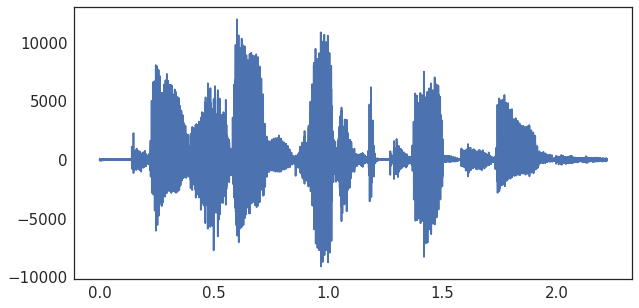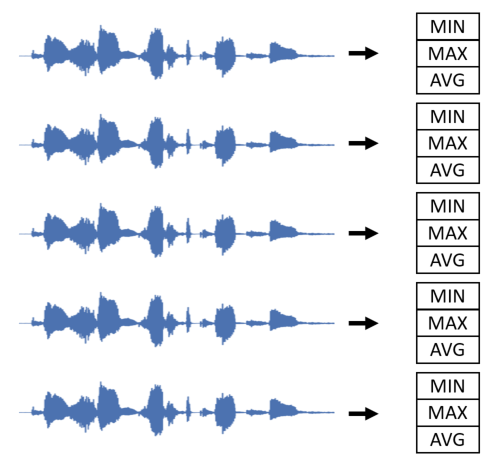Classification and feature engineering
Machine Learning for Time Series Data in Python

Chris Holdgraf
Fellow, Berkeley Institute for Data Science
Always visualize raw data before fitting models
Visualize your timeseries data!
ixs = np.arange(audio.shape[-1])
time = ixs / sfreq
fig, ax = plt.subplots()
ax.plot(time, audio)

What features to use?
- Using raw timeseries data is too noisy for classification
- We need to calculate features!
- An easy start: summarize your audio data

Calculating multiple features
print(audio.shape)
# (n_files, time)
(20, 7000)
means = np.mean(audio, axis=-1)
maxs = np.max(audio, axis=-1)
stds = np.std(audio, axis=-1)
print(means.shape)
# (n_files,)
(20,)
Fitting a classifier with scikit-learn
- We've just collapsed a 2-D dataset (samples x time) into several features of a 1-D dataset (samples)
- We can combine each feature, and use it as an input to a model
- If we have a label for each sample, we can use scikit-learn to create and fit a classifier
Preparing your features for scikit-learn
# Import a linear classifier
from sklearn.svm import LinearSVC
# Note that means are reshaped to work with scikit-learn
X = np.column_stack([means, maxs, stds])
y = labels.reshape(-1, 1)
model = LinearSVC()
model.fit(X, y)
Scoring your scikit-learn model
from sklearn.metrics import accuracy_score
# Different input data
predictions = model.predict(X_test)
# Score our model with % correct
# Manually
percent_score = sum(predictions == labels_test) / len(labels_test)
# Using a sklearn scorer
percent_score = accuracy_score(labels_test, predictions)
Let's practice!
Machine Learning for Time Series Data in Python

